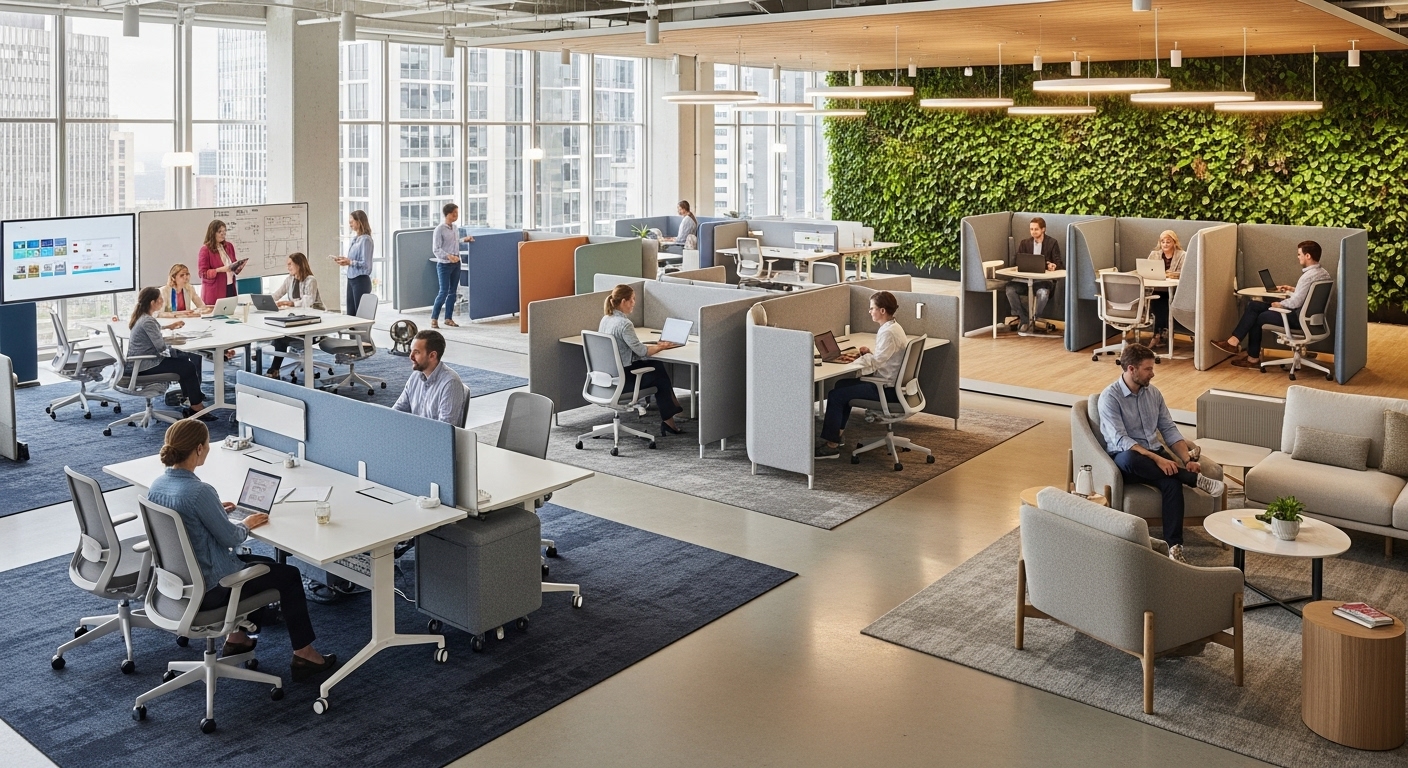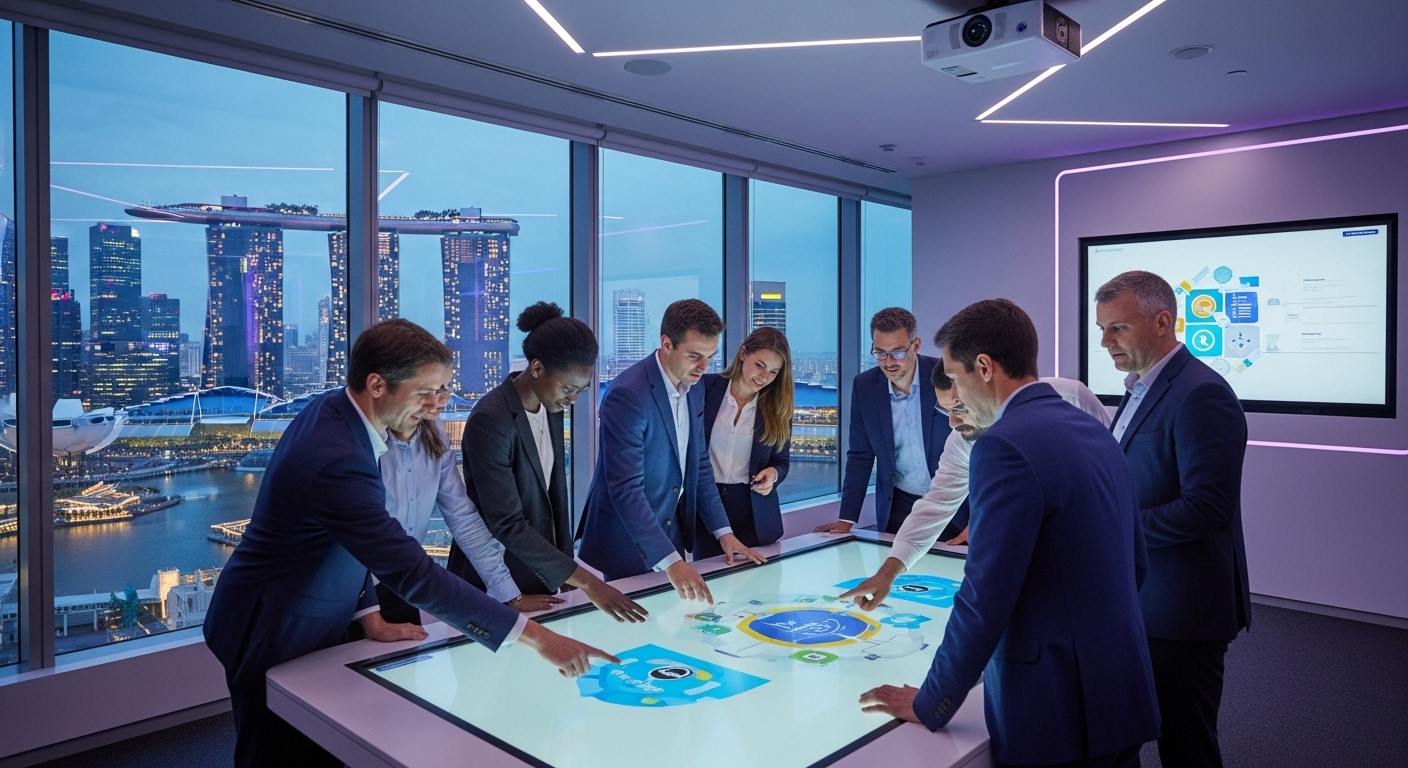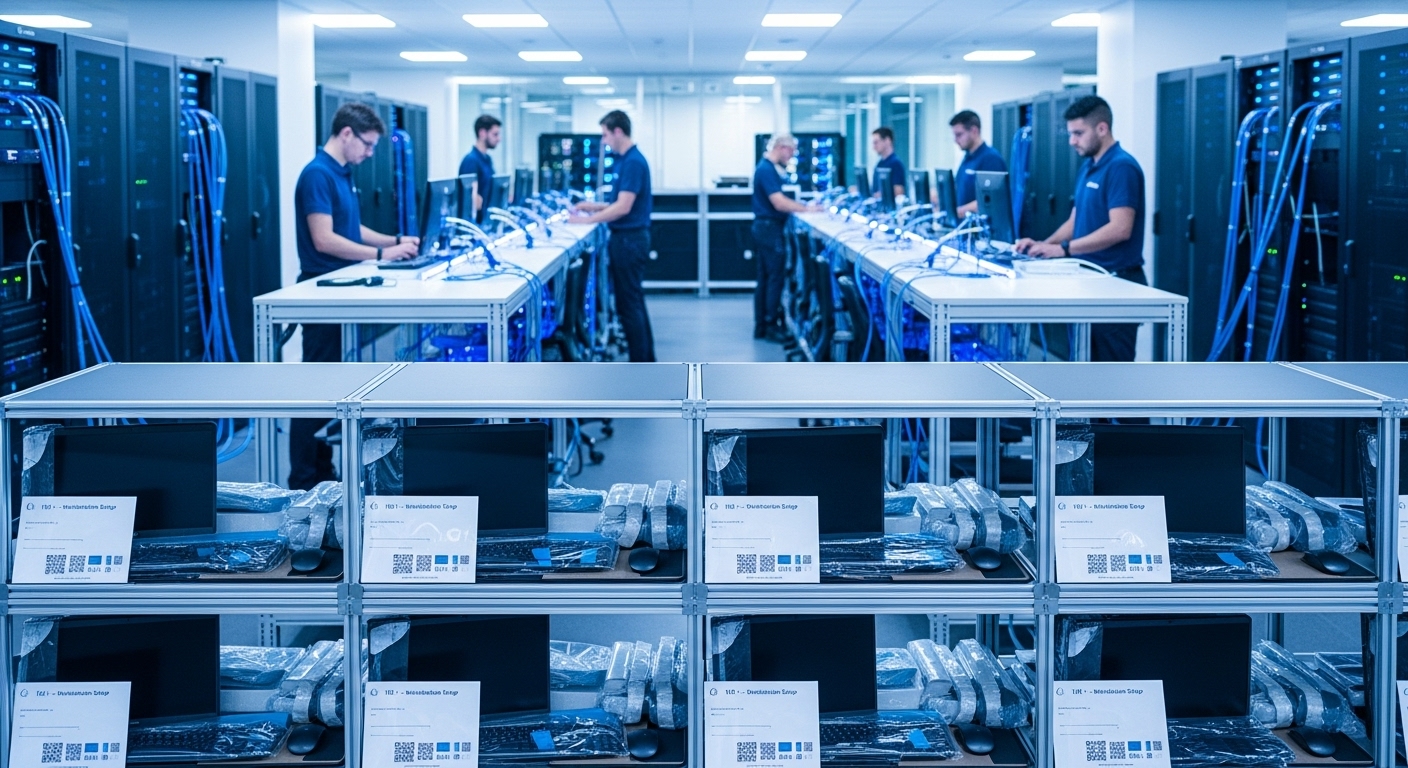In today’s digitally-driven economy, the line between physical space and digital infrastructure is rapidly dissolving. A company’s IT setup is no longer a backend utility to be considered after the office lease is signed; it is the central nervous system of the entire operation. Integrating IT strategy directly into the initial phases of design and logistics is paramount for creating an environment that is not just functional, but also agile, secure, and scalable. Recent trends highlight a major shift away from retrofitting technology into existing spaces towards a more holistic approach of ‘infrastructure by design.’ This means that from the moment an architect sketches a floor plan, considerations for data cabling, server room placement, network access points, and cybersecurity must be at the table. This guide provides a comprehensive framework for leaders and planners to build a robust digital backbone, ensuring that your physical environment and your technological capabilities are perfectly aligned for peak performance and future growth.
Chapter 1: The New Paradigm of Integrated Design
The traditional approach to office setup followed a linear, siloed process: find a space, design the interior, then call in the IT team to make the tech work. This model is now obsolete. The new paradigm is one of integrated design, where IT, facilities, and operations collaborate from day one. This proactive approach treats IT infrastructure as a foundational utility, as essential as electricity and plumbing. The benefits are substantial, ranging from cost savings to enhanced operational efficiency and improved employee experience. By planning for IT needs during the architectural phase, you can avoid expensive and disruptive retrofitting, such as drilling through concrete walls for cabling or realizing a designated server space has inadequate ventilation. More importantly, this integration allows for the strategic placement of technology to optimize workflows. For example, positioning Wi-Fi access points for complete coverage without dead zones, designing conference rooms with built-in, seamless video conferencing hardware, and creating workspaces that support a variety of devices are all outcomes of this integrated strategy. This shift in mindset acknowledges that a building is more than just walls and furniture; it’s an active ecosystem that must support the flow of information. As industry analyst Genevieve Croft states:
“Companies that design their physical and digital infrastructures in tandem are not just building offices; they are engineering ecosystems for productivity. The resulting synergy creates a competitive advantage that is incredibly difficult for siloed organizations to replicate.”
Ultimately, embracing integrated design means you are future-proofing your investment. A well-planned infrastructure can adapt to new technologies, support business growth, and meet evolving security threats without requiring a complete overhaul.
Chapter 2: Foundational Network Architecture: Cabling, Wi-Fi, and Connectivity
The network is the circulatory system of your digital backbone, and its architecture is a critical logistical decision. This foundation begins with structured cabling. While Wi-Fi is ubiquitous, a robust hardwired network remains essential for reliability, speed, and security, especially for servers, desktops, and critical infrastructure. During the design phase, you must plan for the placement of network closets and pathways for running Category 6A or even fiber optic cables to support 10Gbps speeds and beyond. Thoughtful planning ensures that every potential workspace, conference room, and common area has access to a hardwired connection, eliminating future connectivity issues. Concurrently, a strategic Wi-Fi deployment is crucial for mobility and flexibility. This isn’t just about placing a few routers around the office. A professional wireless site survey should be conducted to identify the optimal locations for Wireless Access Points (WAPs). This analysis considers building materials, floor plans, and user density to eliminate dead zones and ensure consistent, high-performance coverage. Modern standards like Wi-Fi 6 (802.11ax) should be the baseline, offering higher throughput, better performance in congested areas, and improved power efficiency for IoT devices. The logical design of the network is just as important. Segmenting the network into Virtual LANs (VLANs) is a key security practice, isolating guest traffic from the internal corporate network and separating different departments, such as finance and development, to limit the potential impact of a breach.
Chapter 3: Server Room & Data Center Logistics: Power, Cooling, and Security
Whether you have a small server closet or a dedicated data center, its design and logistics are non-negotiable. This room houses your most critical assets and must be treated as a fortress. The physical location is the first consideration. It should be in a core area of the building, away from exterior walls and windows to protect against physical threats and environmental risks like leaks. The design must account for three critical logistical pillars: power, cooling, and security. Uninterruptible Power Supplies (UPS) are mandatory to protect against brownouts and short outages, providing enough time for backup generators to kick in or for systems to shut down gracefully. Redundant power circuits connected to different grids can provide an even higher level of availability. Cooling is equally vital, as servers generate a tremendous amount of heat. Inadequate cooling leads to component failure and costly downtime. A dedicated HVAC system, designed to maintain a consistent, cool temperature and appropriate humidity, is essential. Hot-aisle/cold-aisle containment is a best practice in larger setups to manage airflow efficiently. Finally, physical security cannot be an afterthought. Access should be strictly controlled via keycards, biometric scanners, or multi-factor authentication. Video surveillance inside and outside the room is a must. The room itself should be constructed with fire-resistant materials and equipped with a fire suppression system that is safe for electronic equipment, such as a clean agent system instead of traditional water sprinklers.
Chapter 4: Endpoint Device Strategy: Desktops, Laptops, and Mobile Integration
An effective IT setup extends beyond the server room to every device that connects to your network. Your endpoint strategy must be intentionally designed to align with your company’s workflows, security policies, and employee needs. This involves making key decisions about the types of devices you will support. Will you standardize on desktops for their power and lower cost of ownership at fixed workstations? Or will you opt for laptops to enable mobility and a hybrid work environment? Many organizations today employ a hybrid model, matching the device to the role. Beyond company-issued hardware, you need a clear Bring Your Own Device (BYOD) policy. While BYOD can increase employee satisfaction and reduce hardware costs, it introduces significant security and management challenges. A robust Mobile Device Management (MDM) solution is critical to enforce security policies, such as requiring screen locks and data encryption, and to remotely wipe corporate data from a lost or stolen personal device. The logistical aspect of endpoint management involves more than just purchasing hardware. You need a streamlined process for provisioning and deployment. Modern solutions like Windows Autopilot or Apple Business Manager allow for zero-touch deployment, where devices can be shipped directly to employees and automatically configured with the necessary apps and policies upon their first login. This greatly reduces the burden on IT staff and ensures a consistent, secure setup for every user, regardless of their location.
Chapter 5: Cybersecurity as a Design Principle: Building Security In
In the modern threat landscape, cybersecurity cannot be a feature that is bolted on after the network is built; it must be a core principle integrated into every layer of the design. This approach, often called ‘Security by Design,’ is the most effective way to build a resilient and defensible infrastructure. It starts with the network architecture itself. As mentioned earlier, network segmentation via VLANs is a fundamental first step. This contains potential breaches by preventing lateral movement across the network. A next-generation firewall (NGFW) should be the gatekeeper of your network perimeter, providing not just packet filtering but also deep packet inspection, intrusion prevention systems (IPS), and advanced threat protection. Within the physical design, security extends to controlling access to network hardware. Network ports in public areas or conference rooms should be managed, either disabled by default or placed on a restricted guest VLAN, to prevent unauthorized network access. From a software and systems perspective, the principle of least privilege should be enforced everywhere. Users and systems should only have access to the data and resources absolutely necessary for their function. This is implemented through strict access control lists (ACLs) and role-based access control (RBAC). Furthermore, security should be a key criterion in selecting all hardware and software vendors. Choosing products with strong security track records and proactive vulnerability management is essential for maintaining a strong posture over the long term.
Chapter 6: Cloud vs. On-Premise: Making the Right Logistical Choice
One of the most significant strategic decisions in modern IT setup is determining the right mix of on-premise infrastructure and cloud services. This is not an all-or-nothing choice; most businesses today benefit from a hybrid approach. The decision rests on a logistical analysis of cost, control, security, and scalability. On-premise infrastructure, such as your own servers and data storage, offers maximum control and can be more cost-effective for predictable, high-intensity workloads over the long term. It allows you to have direct oversight of your data, which may be a requirement for certain regulatory compliance standards like HIPAA or GDPR. However, it comes with a high capital expenditure (CapEx) for hardware, as well as ongoing operational expenses (OpEx) for power, cooling, and maintenance. In contrast, cloud services from providers like AWS, Azure, or Google Cloud convert CapEx into OpEx, allowing you to pay as you go. This provides incredible scalability and flexibility, enabling you to spin up new servers or services in minutes to meet changing demand. The cloud also offloads the burden of physical hardware management. The logistical challenge with the cloud lies in managing costs, which can spiral if not carefully monitored, and ensuring data security and compliance within the provider’s framework. A hybrid model often provides the best of both worlds: keeping sensitive data or high-performance computing on-premise while leveraging the cloud for scalable applications, disaster recovery, and collaboration tools like Microsoft 365 or Google Workspace. The key is to analyze each workload and data set to determine the most logical and cost-effective home for it.
Chapter 7: Scalability and Future-Proofing: Designing an IT Setup that Grows with You
The final, and perhaps most crucial, element of integrating IT with design and logistics is planning for the future. A static IT setup is a liability. Your infrastructure must be designed with scalability and adaptability in mind from the outset. This means making choices that allow your business to grow without requiring a painful and expensive overhaul of your core systems. In terms of physical design, this could be as simple as ensuring your server room has spare rack space and sufficient power and cooling capacity to accommodate additional hardware. When planning your network cabling, running extra conduits or using modular patch panels allows for easy expansion without breaking open walls. On the network architecture side, choosing switches and routers with modular components and high backplane speeds ensures you can increase capacity as your user base and data demands grow. Adopting a scalable IP addressing scheme (like IPv6) and a flexible network topology are also critical planning steps. From a systems perspective, virtualization and containerization are key technologies for scalability. They allow you to run multiple virtual servers or applications on a single physical machine, making it easy to deploy new services and optimize resource utilization. A hybrid cloud strategy is inherently scalable, providing on-demand resources to handle traffic spikes or business expansion. Future-proofing also means anticipating technological shifts. While you can’t predict every innovation, you can build an agile foundation. This involves choosing technologies based on open standards rather than proprietary ecosystems, fostering a culture of continuous learning within your IT team, and regularly reviewing and updating your technology roadmap. By embedding scalability into your design, you transform your IT infrastructure from a cost center into a strategic enabler of long-term business growth.
In conclusion, the integration of IT setup with physical design and logistics is no longer an option but a strategic imperative. Moving away from the outdated, siloed approach and embracing a holistic design paradigm is the key to unlocking true operational potential. From planning foundational network architecture and securing critical data centers to deploying a flexible endpoint strategy, every decision must be viewed through the dual lens of physical logistics and digital performance. The principles of Security by Design must be woven into the very fabric of your infrastructure, not applied as an afterthought. Furthermore, the strategic choice between on-premise, cloud, or hybrid models, combined with a relentless focus on scalability, determines your organization’s agility and readiness for future challenges and opportunities. By architecting your digital backbone with the same care and foresight as your physical headquarters, you are not merely setting up an office; you are building a resilient, high-performance ecosystem engineered for sustained success. This fusion of the physical and digital is the hallmark of the modern, forward-thinking enterprise.





